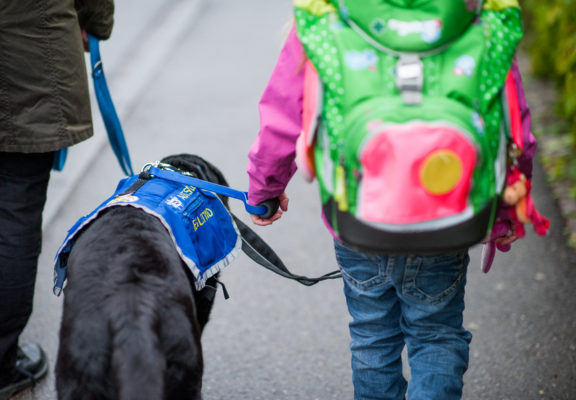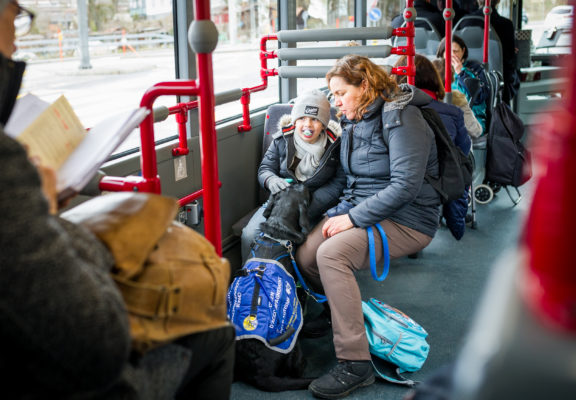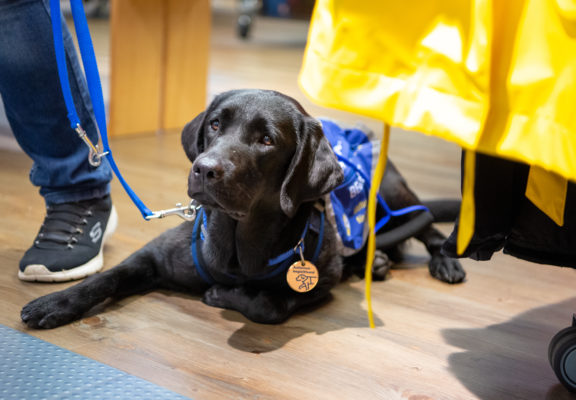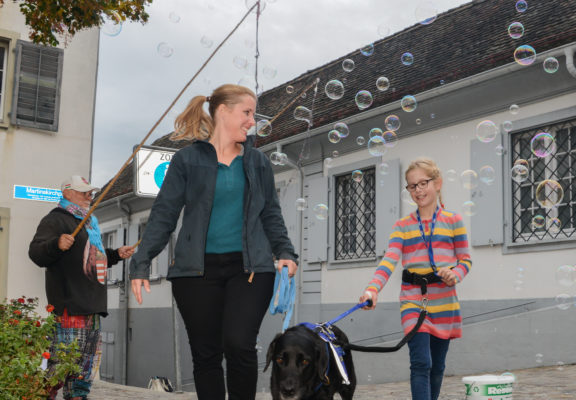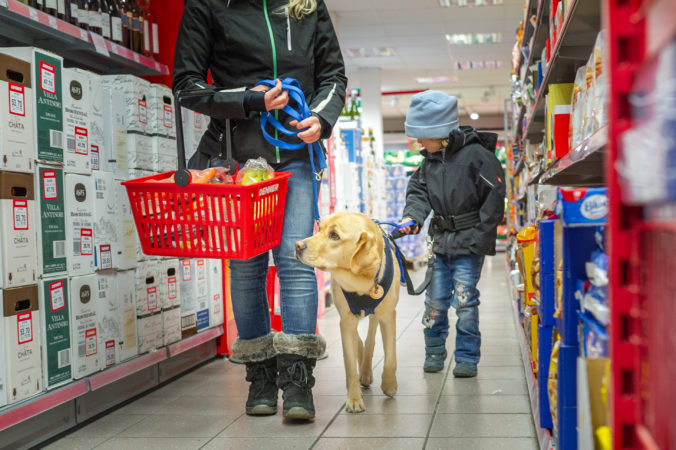
Autism service dogs help autistic children and their families deal with their everyday lives – such as their journey to school, shopping trips and visits to the doctor – and protect these children from dangerous situations, especially in traffic. The child, its parent and the dog always travel as a trio: the dog’s lead is always controlled by the parent, who also gives the dog vocal cues. The child is connected to the dog by a belt and holds on to the handle of the dog’s working harness. The child then follows the dog, that sits or lies down on the ground as soon as it feels the child pulling its harness. In this way, the autism service dog helps the child to stop before it runs into the road - or veers off towards something that has captured its interest.
How might autism service dogs benefit autistic children and their families?
- By opening doors to the outside world: These dogs help their families to leave their houses and to take part in every day life. The dog functions like an ice-breaker as it becomes easier for other people to start talking to the family, allowing them to develop greater acceptance of their autistic child amongst the general population.
- By providing emotional support from day to day: The children gain a friend who will provide them with loyal support, «listen» patiently to their problems and have a calming effect when they feel stressed.
- By improving the life of the whole family: Outside and in its harness, an autism service dog acts as a safe companion for a child and its parent. At home, however, the service dog is just like any other family dog, bringing pleasure to the entire family.
- By supporting the highest possible degree of independence: In the short term, autism service dogs allow children to experience more freedom of movement when they are out and about, because their parents no longer have to hold their hand. In the longer term, they may help the children to become more consciously aware of their environment and work towards their own highest possible degree of autonomy. The actual level of achievable autonomy is very individual, always depending on the child.
